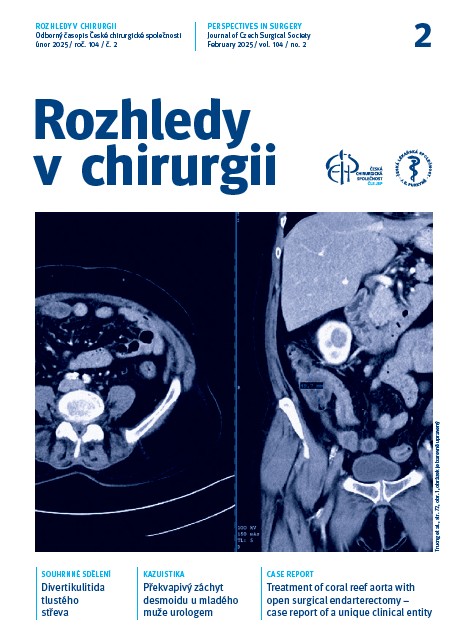Abstract
Diverticulitis of the colon, i.e. inflammation of one or more diverticula, is the most common manifestation of diverticulosis, which affects more than 60% of people over the age of 70 in developed countries. Acute diverticulitis includes a range of degrees of inflammatory involvement, from mild diverticulitis to stercoral erythematosis.
The diagnosis of diverticulitis of the colon has changed, especially in the last 30 years. Imaging using ultrasound and computed tomography allows the assessment of the severity and extent of inflammation without surgery expressed by classification and facilitates the decision on the choice of treatment.
Treatment has also changed. Uncomplicated diverticulitis can now be treated without antibiotics and without hospitalization, abscesses can be evacuated by percutaneous guided drainage. The basis of the surgical treatment of peritonitis of diverticular origin remains the arrest of contamination and sanitation of the abdominal cavity. Mere diversion is insufficient. An effective solution is resection of the inflamed or perforated segment of the intestine, a new option is laparoscopic lavage. The best results are achieved by intestinal resection with primary anastomosis; which should be established only if certain conditions can be met. Exclusion of the anastomosis reduces the demands of the operation, but generally leads to worse results. Despite the recommendations based on EBM, opinions on the choice of operation are still not clear today.
The text presents the development of diverticulitis treatment, arguments in favor of or against resection with anastomosis, resection with exclusion of the anastomosis and laparoscopic lavage. The conditions of the procedures, especially the safe establishment of the anastomosis, and current recommendations are presented.
doi: 10.48095/ccrvch202547

